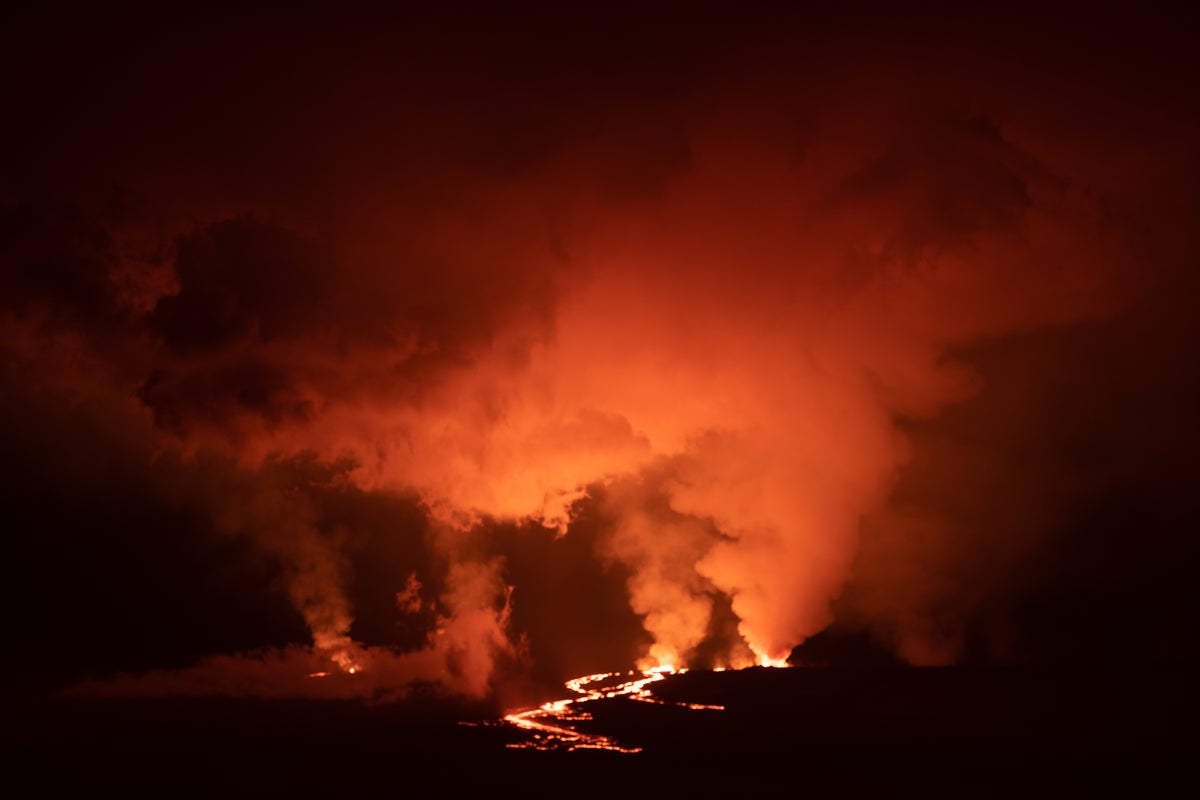
Tourists have flocked to Hawaii to witness the world’s largest active volcano erupting, with fountains of lava being spewed out reaching over 100 feet high.
This is the first eruption of Mauna Loa in 38 years, with eruptive activity at the site last seen in 1984. Smaller nearby volcano, Kilauea, has been erupting since 2021, so both can be viewed from Hawaii Volcanoes National Park.
The park is open 24 hours a day and, as reported by Stuff, tourists have seen the best views at night and before sunrise.
Spokesperson for the National Park, Jessica Ferracane, said: “The viewing has been spectacular,” before adding that, “this is a rare time where we have two eruptions happening simultaneously.”
Mauna Loa covers over half the island, and has a surface area of approximately 5,100km2.
One of the lava flow fissures – the vent through which lava erupts – is moving towards the nearby Daniel K. Inouye Highway, with forecasts indicating it could take two days to reach it. Strands of volcanic glass are falling in the surrounding Humu‘ula Saddle area.
The US Geological Service (USGS) released a report yesterday announcing a red warning code in place for the Mauna Loa eruption and that “volcanic gas plumes are lofting high and vertically into the atmosphere.”
Officials also stated that no property is currently at risk.
The USGS said: “Our seismic monitoring detects tremor (high rates of earthquakes) in the location of the currently active fissures. This indicates that magma is still being supplied, and activity is likely to continue as long as we see this signal.”
Meanwhile, in an update yesterday about Kilauea’s smaller eruption, The USGS detailed: “111 million cubic meters (29.2 billion gallons) of lava had been effused since the beginning of this eruption on 29 September 2021.”
The report continues: “All recent eruptive activity has been confined to the crater. No significant changes have been observed at the summit or in either rift zone.”
This is the 34th time Mauna Loa has erupted since records began in 1843.







